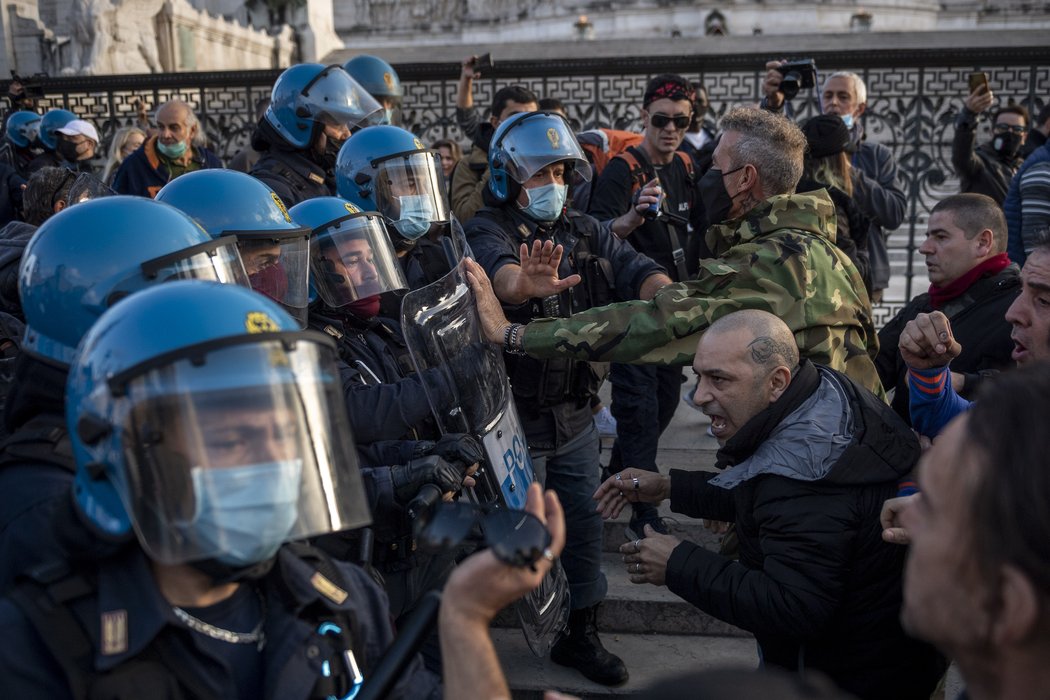
Peaceful Assembly
With COVID-19 infections rising and new confinement measures looming, protests have flared up in cities all across Italy. People have taken to the streets to express their concerns about the economic consequences of a second lockdown, which some feel is not being adequately addressed by the government. While protests were largely peaceful, in some cities, including Florence, Rome, Naples, Turin and Bologna, protestors clashed with police as the demonstrations turned violent. Riot police deployed tear gas and several dozen protesters were arrested. Media reports suggest that the Italian mafia have stoked violent anti-lockdown protests to protect their interests.
Firenze, cittadini in massa contro lockdown e governo Conte. Scontri con la Polizia che ha bloccato il corteo non autorizzato. #Lockdown #RadioSavana pic.twitter.com/QRSIAjr60B
— RadioSavana (@RadioSavana) October 30, 2020
Nuovi scontri a Roma: cariche della polizia in Piazza del Popolo pic.twitter.com/N6q4cn5mWH
— Local Team (@localteamtv) October 27, 2020
Expression
Italian journalist Mimmo Rubio threatened over coverage of COVID-19 protests and organised crime
— CoE Media Freedom (@CoEMediaFreedom) October 30, 2020
🚨Alert submitted by @pressfreedom
Find our more👉https://t.co/keMLIVlnv0#EuropeForFreeMedia pic.twitter.com/KyI1GX3H6C
A joint statement by International Press Institute (IPI), European Centre for Press and Media Freedom (ECPMF), European Federation of Journalists (EFJ) and others condemned the physical attacks, intimidation and death threats against journalists covering anti-lockdown protests in several cities. According to Media Freedom Rapid Response (MFRR),over three weeksat least nine incidents involving 14 members of the Italian media in six different cities have been documented. The cases include:
- Crowds of protesters chanted anti-media slogans, including labelling the media as ‘terrorists’ and making death threats.
- On 19th October, journalist Mimmo Rubio was forced to barricade himself inside his house after protesting crowds in Naples threatened him.
- On 28th October 2020, a journalist and a camera operator from Rai 2 news programme TG2 were intimidated and robbed of their equipment by protesters in the city of Palermo.
- On 30th October 2020, several journalists covering protests faced intimidation from protesters while another journalist, Simone Innocenti, faced threats on social media.
- Valerio Lo Muzio, a video journalist for La Republica, was threatened and chased by unknown persons as he covered a protest, who called him ‘terrorist journalist’.
- On 31st October 2020, photojournalist Tommaso Germogli was punched in the head by a street vendor during the protest and suffered from head trauma resulting in hospitalisation.
Over the last 3 weeks, #MediaFreedomRR partners have documented at least nine incidents involving 14 members of the Italian media in six different cities in relation to anti-lockdown and anti-mask protests. Here is our statement https://t.co/7TMe4Cqgyk #COVID19 pic.twitter.com/RxVwemSEcH
— Media Freedom Rapid Response (MFRR) (@MediaFreedomEU) November 11, 2020
Reporters Without Borders also condemned violence against journalists.
“During a public health, economic and social crisis of this scale, journalists should be more than ever able to cover the situation. But the media are the targets of systematic violence that is intensifying by the day. We call on all Italian politicians to firmly condemn these attacks and we urge the police to provide journalists in the field with real, constant protection.”- Pavol Szalai, the head of RSF’s European Union and Balkans desk.